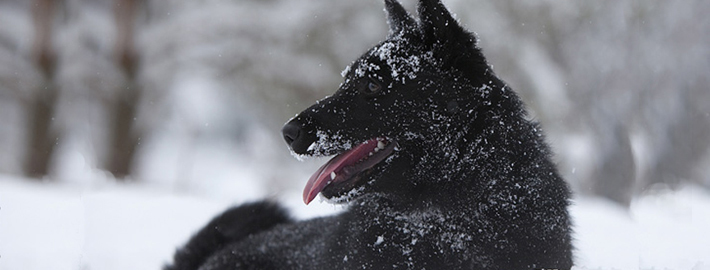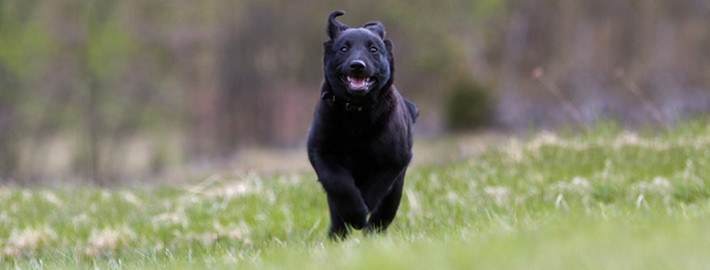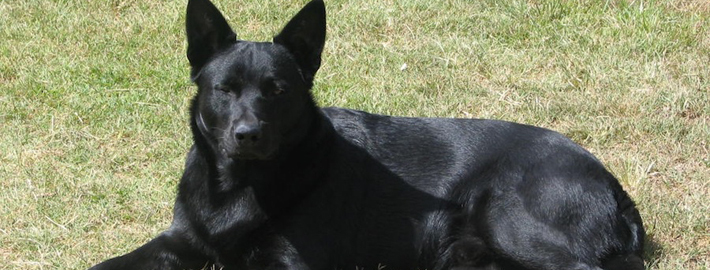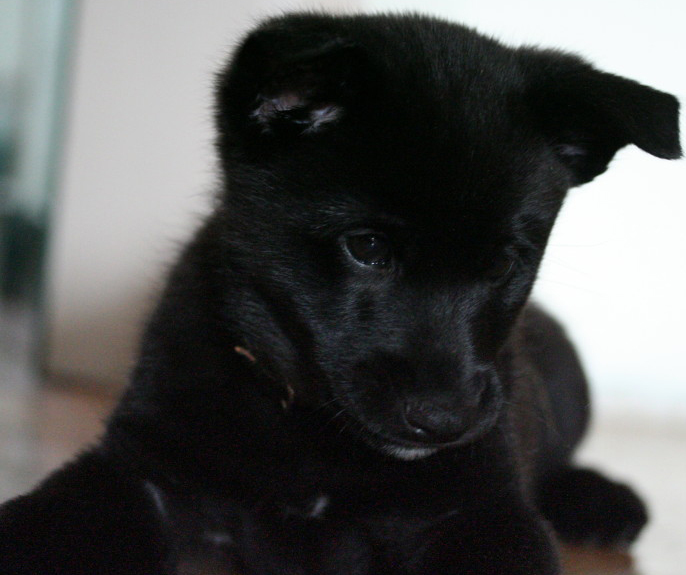What makes the Black Norwegian Elkhound Unique?
These friendly hunting dogs are great pets for those living in cold climates. However, they are not often found outside their homeland due to their scarcity.
Page Contents
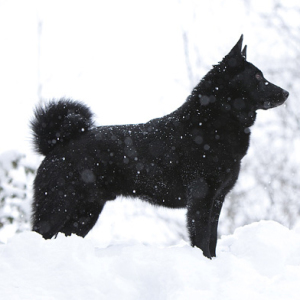
Is the Black Norwegian Elkhound Right For You?
Black Norwegian Elkhounds are affectionate family members and greet those that they know quite enthusiastically. These calm animals can be relied on to behave well around children. They can also be exceptionally vocal at times .Members of this breed generally make good guard dogs because they are usually cautious around unfamiliar persons and they will bark to alert their owners if someone shows up.
These dogs should get along fine in an apartment if they are given enough exercise. However, they will function better in households that contained a fenced in yard for them to enjoy. Black Norwegian Elkhounds that do not get enough exercise or mental stimulation have a tendency to become neurotic so it is important to make sure they get adequate amounts of playtime. Owners should also note that members of this breed have tendency to wander off if they smell an interesting aroma. Therefore, these dogs should not be allowed off their leashes in unsecure locations.
In 5 Words
- Strong Willed
- Alert
- Proud
- Hardy
- Intelligent
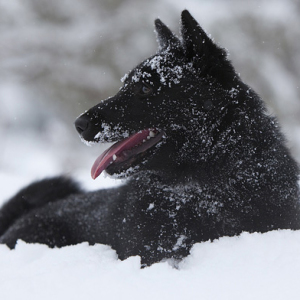
Characteristics
Learn About the Black Norwegian Elkhound
Description
General Description
In keeping with their Spitz linage, Black Norwegian Elkhounds display the characteristics that are common to that particular family of dogs. They have upright ears, a stocky body, and a curly tail that is carried over their backs. Dark brown eyes and wide heads are other breed features. These dogs also have thick, weather resistant coats.
Size
Members of this breed stand between 16.5 and 19.5 inches (42 and 49.5 centimeters). Black Norwegian Elkhounds are somewhat slighter in stature than their grey contemporaries. On average, males of this breed stand about 18.5 inches (47 centimeters) high and females measure 17 inches (44 centimeters) tall. Black Norwegian Elkhounds of both genders typically weigh between 35 to 55 pounds (15 to 25 kilograms) each.
Coat
Norwegian Elkhounds have a coarse double coat that allows them to better withstand the sometimes harsh weather conditions of their native country. Black Norwegian Elkhounds are precisely the color that their name implies, but white markings are permissible. While there is a grey version available, these dogs are another breed entirely according to Fédération Cynologique Internationale (FCI) standards.
Short History of the Black Norwegian Elkhound
Norwegian Elkhounds have an ancestry that dates back to Viking times. Members of this breed have historically excelled at hunting large game, even in harsh climates and on difficult terrain. In fact, their name means “moose dog”. Although hunting was the breed’s primary purpose, they also were used for protecting livestock and guarding homes. A smaller, solid black version of these dogs was produced during the 19th century. However, this particular variety was more limited in its’ distribution and it was not as favored by breed enthusiasts as the grey types were. Nonetheless, Norwegian Elkhounds began being entered in dog shows beginning in 1887 and achieved American Kennel Club recognition in 1913. Banned from the show ring at first, Black Norwegian Elkhounds were bred as working dogs for many years. They experienced a breed revitalization in the middle of the 20th century and, though they are still rare even in their homeland, their numbers are steadily increasing.
Temperament
Black Norwegian Elkhounds are affectionate family members and greet those that they know quite enthusiastically. These calm animals can be relied on to behave well around children. They can also be exceptionally vocal at times .Members of this breed generally make good guard dogs because they are usually cautious around unfamiliar persons and they will bark to alert their owners if someone shows up.
Prospective owners should also note that some Norwegian Elkhounds are known to be aggressive towards other dogs of their own gender, but this tends to be more of an uncommon trait rather than a breed characteristic. Reports vary on the ability of Elkhounds to get along with other non-canine pets. Therefore, owners should be cautious about introducing members of this breed to households that already contain small animals as pets.
These dogs should get along fine in an apartment if they are given enough exercise. However, they will function better in households that contained a fenced in yard for them to enjoy. Black Norwegian Elkhounds that do not get enough exercise or mental stimulation have a tendency to become neurotic so it is important to make sure they get adequate amounts of playtime. Owners should also note that members of this breed have tendency to wander off if they smell an interesting aroma. Therefore, these dogs should not be allowed off their leashes in unsecure locations.
Caring for Your Black Norwegian Elkhound
General Health
Members of this generally robust breed live about 11 years on average. As is the case with any type of dog, there are several medical conditions that can cause concern. Eye problems such as entropion, ectropion, and cherry eye are not uncommon in Black Norwegian Elkhounds. Patellar luxation, epilepsy, bloat, and arthritis are among the other major health problems for these dogs. Owners should additionally note that Elkhounds function best in the colder climates that they were bred to tolerate.
Care
Daily
As they are an energetic breed, adult Norwegian Elkhounds need plenty of vigorous exercise. An hour of lively activity on a daily basis is recommended in order for these dogs to be at their best. The periods of exercise can be broken up into increments of twice daily or done all at one with a very long walk.
Weekly
To reduce instances of both foul breath and periodontal disease, it is recommended that owners brush their dog’s teeth on a regular basis. These dogs need to be groomed several times a week with a metal toothed comb, especially when they are shedding, because otherwise mats can easily form.
Monthly
Flea, heartworm, and tick prevention medication is a must for all pets. Most products are administered on a monthly basis.
Grooming & Bathing
Black Norwegian Elkhounds have a coat that is somewhat impervious to both grime and moisture. This breed sheds heavily on a seasonal basis and they may need daily baths at such times. Otherwise these dogs can be bathed on an as needed basis because they do not generally have an aroma. Owners will also want to keep their Elkhound’s nails trimmed to prevent any injuries from arising.
Exercise & Training
Black Norwegian Elkhounds have an independent nature and they are far more stubborn than their grey coated contemporaries. These intelligent dogs don’t always take to obedience lessons but they can be taught with patient, consistent training methods. Repetitive barking may be problematic with some members of this breed and owners will need to teach their dogs not to indulge in such habits. In order to keep them content, Norwegian Elkhounds also need plentiful exercise. However, puppies under the age of two years old should not be allowed to overexert themselves. In keeping with their historical purpose, Elkhounds are wonderful hunting dogs and will happily serve that purpose for their owners. Members of this breed might additionally enjoy jogging, hiking, or running beside a bicyclist.

